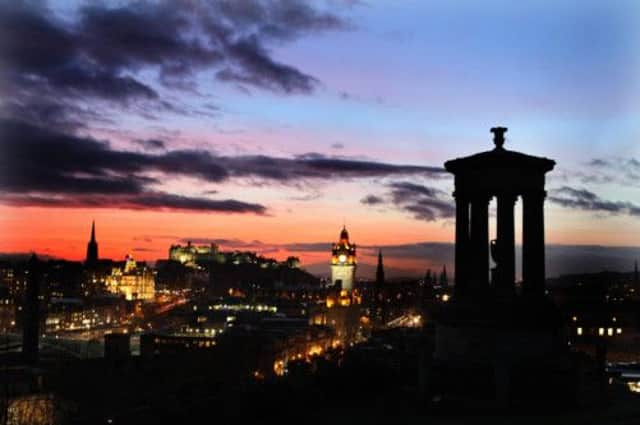Erikka Askeland: Rekindling a love of Auld Reekie


These things are determined somehow, somewhere, by someone. As such, they should be taken on board – but more as a warning against complacency. Although, the sooner the city’s already crazed road system is relieved of the travesty of tram works, the better.
Edinburgh’s most recent critics suggested the city is expensive to visit, which is true. And – dare I say it – in some places, its streets are dowdy and forlorn, worn down by near dereliction and lack of investment. I sense danger when civic groups want to defend its creaking fabric at all costs, confusing preservation with a deathly stasis.
Advertisement
Hide AdAdvertisement
Hide AdBut how do you define, and thus uphold, the allure of a place? It remains true that when you live in Edinburgh, you are more likely to host visitors from abroad. When I lived in Manchester, frankly, this didn’t often happen. Friends and relatives from Canada stayed away in their droves. And while the former industrial powerhouse of the English north-west has plenty of charm and chutzpah, for most New Worlders their idea of the city is a more often than not a blankness. Perhaps they get inklings of spinning jennies or the Hacienda night club. Or, of course, the football.
But mention “Edinburgh” and there is a profound sense of awareness that transcends national boundaries. It runs deep in the imagination, and wide. We should be thankful the Scottish capital doesn’t have to rely on the successes of its football clubs.
So, when living in Scotland, the spare bedroom has been a boon. And I love it – this week Sis has been in town. Between the eating and drinking and catching up, we have had the city as our scenic panorama. And having visitors means you can be a tourist in your own town, seeing with fresh eyes what familiarity clouds like a cataract.
Having settled in Scotland from Canada, I still get hit with intimations of the richness of the history that surrounds me. On my usual walk into work, it happened again recently as I passed through the 16th century close under Huntly House, its thick, stone arch weathered and silent even as cars sped past it.
As I walk with my dear sibling along the streets – not even the self-consciously historic ones – I see her absorbing the scene, populated by gables, thrusting tenements and the killer cobblestones. Despite living here for years, and perhaps getting too accustomed, I remember well her feeling of wonderment at the layers of time built into the stone work.
Out of the city, I’ve marvelled at the drystane dykes marking ancient boundaries. Even these humble walls have accreted through hundreds of years of diligent – if dull – labour.
For people in the “New World”, the built environment in Scotland is often simply amazing. Sure, there are noteworthy historic parts in North America. But I also recall when last driving into my home town in Canada feeling the opposite of awe about the utilitarian architecture of the low-rise strip malls, the proliferation of fast-food chains and overhead electricity poles.
The secret of the appeal of Scotland to visitors is how the landscape – town or country – reveals its stories. If you drive through Glen Coe, the chilling betrayal of the Campbells reverberates among the sublime views. The local mountain range near my family in Canada, the Rockies, is big on soaring peaks, but thin on histories. Even the name of geological spine is prosaic – as if all its European discoverers had to say about seeing these vast mountains was: “Gee, aren’t they rocky?”
Advertisement
Hide AdAdvertisement
Hide AdSo much wilderness can be spooky. At least if you are wandering among the Scottish hills and glens, there is likely to be a pub somewhere en route. Unlike my own home country, where wandering too far means you are likely to die of exposure. And there are bears.
In Canada, commentators, including Margaret Atwood, have written on the country’s lack of stories as a terrifying void, almost inhuman. Instead, indigenous legends and folklore seep through, forces of nature transmuted into spectres such as the Manitou, or strange wild men like the Sasquatch.
Here, in Scotland, there are ghosts and stories, but they look like us. And we can see and live in what they have left us. And there is something stirring in that.